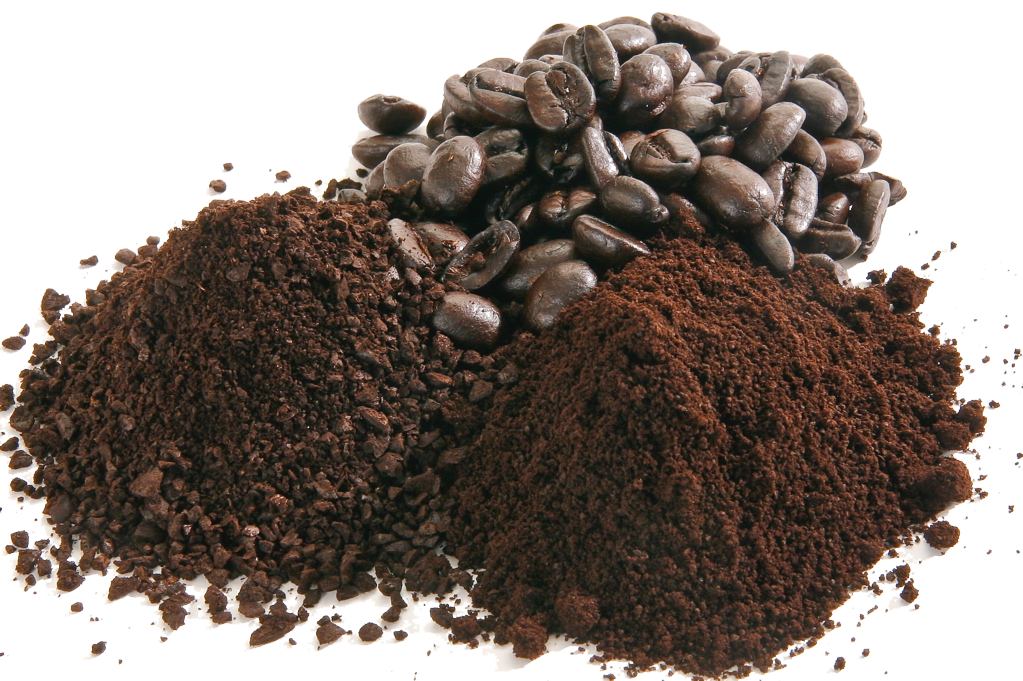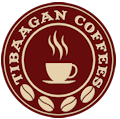How to Grind Coffee Properly:
Match the Grind to the Method of Brewing…
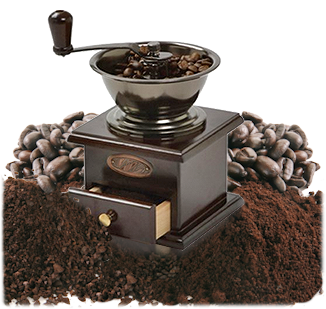
Remember to grind what you need right before brewing as ground coffee expires at a faster rate than whole bean coffee, and the fresher your coffee, the more flavor in your cup when it’s brewed. Grinding coffee right before its brewed is important to ensuring a fresher cup of coffee every time.
Note: We can’t over-emphasize this obvious point but it is important if your goal is “The Perfect Cup”.
Use a burr grinder preferably. Finally, grind to a coarseness that suits your brewing method. In the case of conventional North American drip brewing, go with a medium grind.
Coffee Grinders:
There are two main kinds of coffee bean grinders made for home use: the “coffee mill” sometimes called the burr grinder, and the more common propeller grinder.
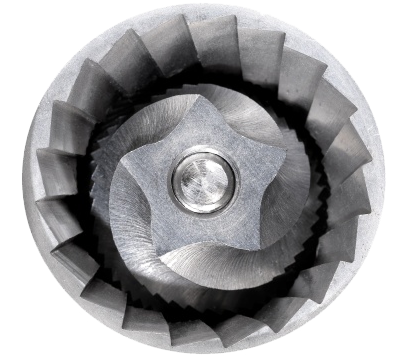 Burr Grinder
Burr Grinder
The burr grinder grinds the beans using two burrs, or serrated discs. You set the type of grind you want, load the beans into the chamber, and start grinding. Ground coffee collects in a second chamber ready to be brewed.
Compared to the propeller grinder, it will take a little longer to grind beans with a burr grinder. In my personal experience, I assumed the first time I used a burr grinder that it was defective because it was taking so long. That can be the downside, although I now own the Cuisinart burr grinder, and it grinds as quickly as my old propeller grinder did. The major upside is that a burr grinder produces a consistent grind. If you put ground coffee from a burr grinder under the microscope, you would see a consistent grind throughout. Consistency is very important to the process of making good coffee. This makes a burr grinder a valuable kitchen appliance to have.
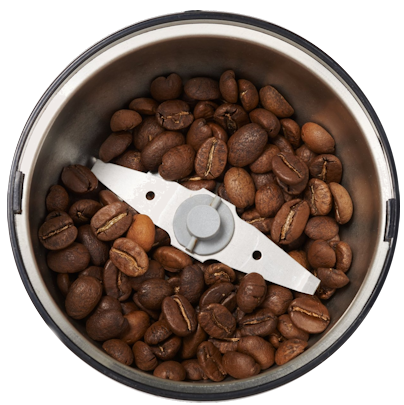 Propeller Grinder
Propeller Grinder
The more common grinder is the propeller grinder, known for its two-sided single blade that spins and chops the beans at the same time. After loading the beans into the chamber and grinding, you decide when to stop grinding the beans based on personal experience and through the transparent cover of the grinder.
Unlike the burr grinder, there is no second chamber into which consistently-ground coffee collects. Instead, you decide when to stop grinding. Of course, you can open the lid to take a closer look at the coarseness of your ground coffee and continue grinding if need be. Some propeller grinders still with life in them need to be thrown out. The heat of the propeller will affect the flavor of the coffee, and not in a good way.
What you get the propeller grinder gives you an inconsistent grind and potentially burns your coffee. Why use it? First of all, it’s the more common coffee grinder so you’ll find it at a lower price and after all, it still does the job, just not as consistently as the burr grinder. But, the burr grinder takes time to grind, and the propeller grinder does the job in a fraction of the time, which is another reason.
Coffee Grind Size
Drip Coffee isn’t too demanding, and $50 or so should get a nice grinder.
French Press requires a consistently coarse grind, but shouldn’t cost you more than about $100 or so for something that will work nicely for both French Press and Drip.
If you are doing Espresso, and want to do it right, you will be looking at something in the $250-$400 range. Most of these grinders will also work nicely for Turkish Coffee or Greek Coffee, the finest grind of all.
This article uses high quality photographs of ground coffee against a U.S. nickel to visually explain these terms. For those outside the United States, the coin below is 21.21 millimeters in diameter and 1.95 millimeters thick.
Extra Coarse Grind
 Extra Coarse Coffee Grind used for Cold Brewing methods.
Extra Coarse Coffee Grind used for Cold Brewing methods.
Coarse Grind
 Coarse Coffee Grind most commonly used for French Press coffee.
Coarse Coffee Grind most commonly used for French Press coffee.
Medium-Coarse Grind
 Medium-Coarse Coffee Grind used in speciality devices like the Cafe Solo and Chemex Brewers.
Medium-Coarse Coffee Grind used in speciality devices like the Cafe Solo and Chemex Brewers.
Medium Grind
 Medium Coffee Grind used in Drip brewing methods.
Medium Coffee Grind used in Drip brewing methods.
Medium-Fine Grind
 Medium-Fine Coffee Grind used for Pourover Cones, Vacuum Pots, and Siphon Brewers.
Medium-Fine Coffee Grind used for Pourover Cones, Vacuum Pots, and Siphon Brewers.
Fine Grind

Fine Coffee grind used for espresso.
Extra Fine Grind
 Extra Fine Coffee Grind used for Turkish coffee.
Extra Fine Coffee Grind used for Turkish coffee.
How Long Do You Grind the Coffee For?
Some blade grinders have automatic settings, but if you have a manual grinder then you need to know how long you can grind your coffee. Depending on your brewing method, you may need large coffee grinds (i.e. French Press) or extra fine grinds (espresso). Coffee grinds are measured in ‘microns’, with larger numbers referring to larger coffee particles.
You can use this handy chart for reference:
French Press – 900 Microns (6-9 seconds)
Percolator – 800 Microns (7-10 seconds)
Metal Filter – 700 Microns (10-12 seconds)
Paper Filter (cone-shaped coffee makers) – 500 Microns (12-15 seconds)
Espresso – 300 Microns (15-19 seconds)
Turkish – 100 Microns (19-22 seconds)
Coffee Grind Chart by Chris Arnold is licensed under a Creative Commons Attribution-NoDerivs 3.0 Unported License
